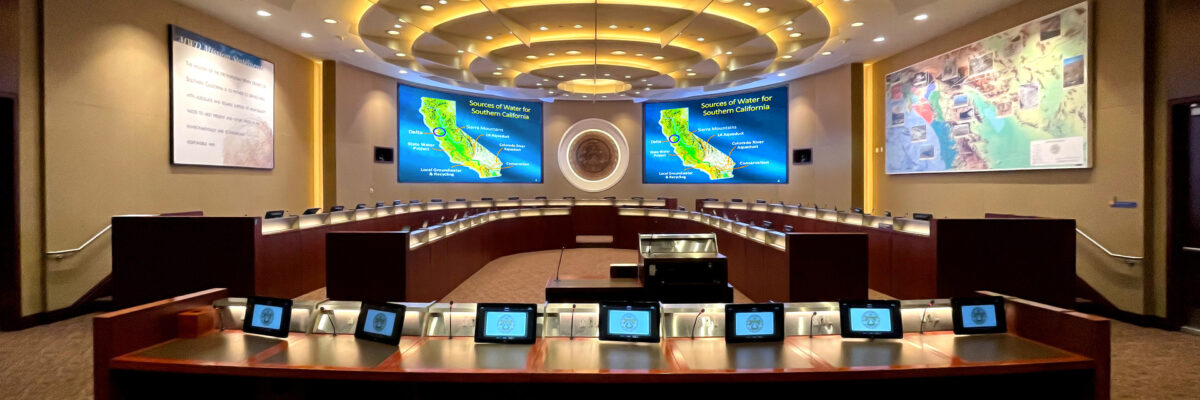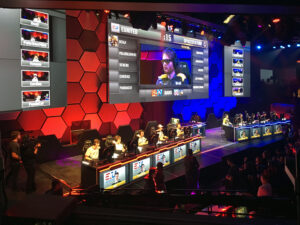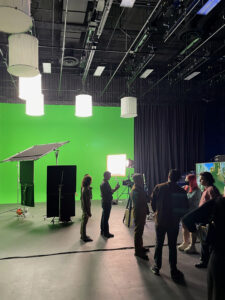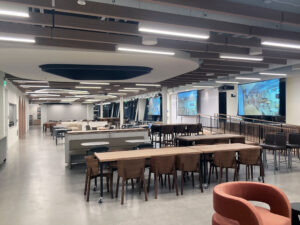By Richard D. Falconer CLD, LC, IALD, IES, Senior Lighting Designer at NV5
Lighting design is crucial in shaping the experience and ambiance of a space, whether for a live performance, for the camera, or for an architectural setting. While theatrical lighting and TV/video lighting (also known as specialty lighting,) and architectural lighting both aim to illuminate spaces effectively, they are fundamentally different in their approaches, objectives, and specifications. Although both tell a story of the human experience, they do so from differing perspectives. Understanding these differences helps space designers create environments that meet their intended purposes, whether for artistic expression, reportage, or functional illumination. It is critical to communicate with the Lighting Designer and Audiovisual Designer early in the process to ensure the best approach and to achieve the optimal outcome.
1. Objectives and Purpose
Specialty lighting and architectural lighting serve distinct primary purposes: Specialty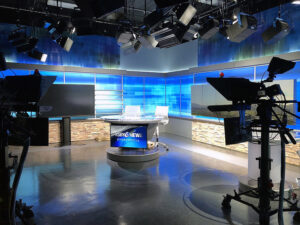
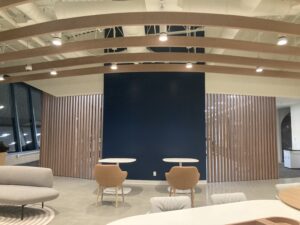
2. Design Flexibility and Control
Specialty lighting requires a high degree of flexibility and control. Designers work with an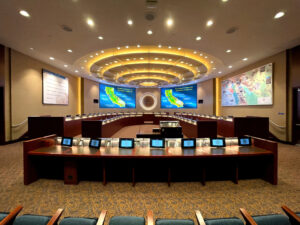
Architectural lighting, while it also involves control, generally emphasizes consistent and stable lighting conditions. The focus is on uniformity and predictability rather than dynamic changes. Architectural lighting systems might use adjustable luminaires, but their primary function is to provide a steady and reliable light source that enhances the design and usability of a space. Control systems in architectural lighting often include programmable schedules and sensors to adjust light levels based on time of day or occupancy, rather than the rapid and dramatic changes of theatrical environments. Additionally, sustainability and individual user control are becoming more common with environmental programs such as LEED and WELL.
3. Equipment and Technology
The equipment used in specialty lighting is often more specialized than that used in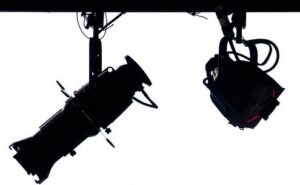
Each fixture type has specific characteristics suited to different aspects of performance and presentation lighting. For example, profile spotlights provide a sharp beam of light with adjustable focus, ideal for spotlighting actors or creating patterns. Fresnel spotlights provide a directional luminaire with a soft edge that can blend more easily for overlapping areas. Wash luminaires can bathe the stage in a nearly infinite number of colors. Cyc lights can create dynamic background illumination such as sunsets or stormy skies. Automated moving heads offer flexibility with their ability to pan, tilt, and change colors.

4. Rigging and Installation
Theatrical and video lighting involve complex rigging and installation processes. Fixtures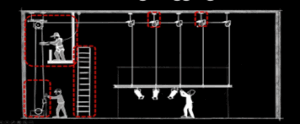
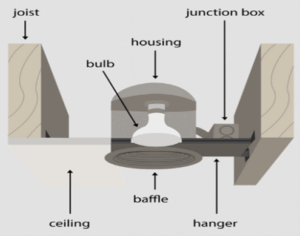
5. Impact on Space
Specialty lighting typically has a greater temporary and transformative impact on a space; the lighting design is tailored to the specific needs of a performance and can be altered frequently. This means that the same space can appear vastly different depending on the lighting configuration used for each performance.
On the other hand, architectural lighting has a more permanent impact on the space. The lighting design is intended to complement the architecture and remain consistent over time. The fixtures and their placement are chosen to enhance the space’s functionality and appearance while remaining in harmony with the overall design. Changes to architectural lighting are infrequent and more carefully considered.
6. Aesthetic Considerations
Specialty lighting is often bold and dramatic. The design focuses on creating visual effects
In architectural lighting, aesthetics are more subtle and 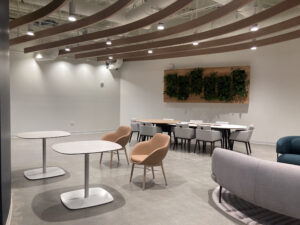
7. Budget and Maintenance
Consider the investment in specialized equipment, infrastructure and technology necessary for specialty lighting; the costs include not only the initial purchase but also the ongoing expenses related to maintenance, repairs, and periodic upgrades. The maintenance of specialty lighting systems can be frequent due to the high usage and the need for regular adjustments. Specialty lighting equipment can be reused countless times and, theoretically, can last indefinitely.
Architectural lighting budgets typically focus on long-term value energy efficiency, and minimal maintenance. While upfront costs can be substantial, particularly for high-quality fixtures and energy-efficiency, the systems are designed for durability and low maintenance. Once installed, architectural lighting typically requires less frequent intervention. New lighting systems are designed to a ‘lumen maintenance’ factor of 70%, usually written as ‘L70,’ which means the light output (lumens) has depreciated by 70% of its initial value (IES LM-79 and IES LM-80.) This is denoted in hours. Depending on the client, it may be beneficial to specify luminaires with replacement lamps, rather than built-in LED modules, to negate the need to replace entire fixtures every few years.
Conclusion
Understanding the distinctions between theatrical/video lighting and architectural lighting is essential for designers working in their respective domains. While specialty lighting focuses on creating dynamic and transformative effects to enhance performance, architectural lighting aims to provide consistent and functional illumination that complements the design of a space. By comprehending these differences designers and architects can effectively meet the needs of their projects and achieve their intended visual and functional outcomes. The key takeaways are to understand the differences between the styles, when to use them and to communicate with your lighting designer early in the design process to ensure the desired result.
Richard D. Falconer CLD, LC, IALD, IES, is a Senior Lighting Designer at NV5 in Philadelphia, PA. Richard is among the 350 people worldwide with the Certified Lighting Designer certification.

